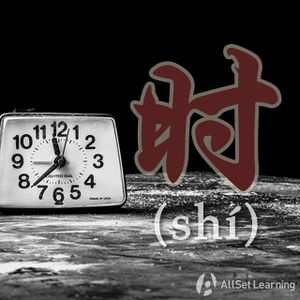Difference between revisions of "Expressing "when" with "shi""
(Created page with "{{Grammar Box}} By now you should now [[ |how to express "when" using "的时候" (de shíhou)]]. But there's also a slightly shorter, more formal way to do it: simply use...") |
|||
| Line 1: | Line 1: | ||
{{Grammar Box}} | {{Grammar Box}} | ||
| − | By now you should now [[ |how to express "when" using "的时候" (de shíhou)]]. But there's also a slightly shorter, more formal way to do it: simply use 时 (shí) all by itself. (No 的!) | + | By now you should now [["When" with "de shihou"|how to express "when" using "的时候" (de shíhou)]]. But there's also a slightly shorter, more formal way to do it: simply use 时 (shí) all by itself. (No 的!) |
== Structure == | == Structure == | ||
Revision as of 12:56, 13 May 2015
-
Level
-
Similar to
-
Used for
-
Keywords
By now you should now how to express "when" using "的时候" (de shíhou). But there's also a slightly shorter, more formal way to do it: simply use 时 (shí) all by itself. (No 的!)
Structure
(Subject) + Verb / Adj. + 时, Subject + Verb + Object
As time words can appear before or after the subject, you can also place the Time + 时 (shí) after the subject.
Examples
There are two great examples of this pattern in the poem 远和近 by 顾城:
- 你,
- 一会 看 我 ,
- 一会 看 云 。
- 我 觉得 ,
- 你 看 我 时 很 远 ,
- 你 看 云 时 很 近 。
See also
Sources and further reading
Books
- Basic Patterns of Chinese Grammar (pp. 24-5) →buy
- Integrated Chinese: Level 1, Part 2 (3rd ed) (pp. 293-4) →buy



